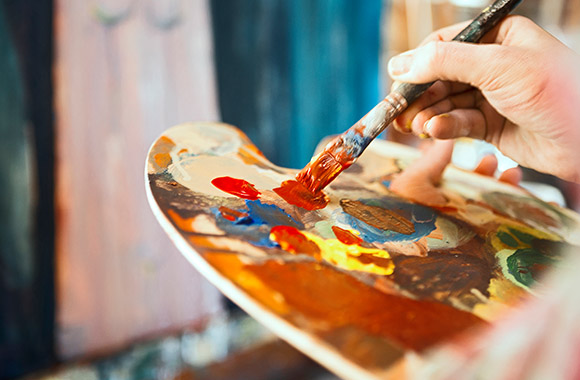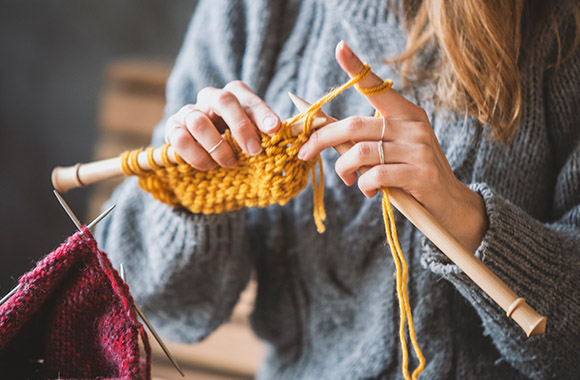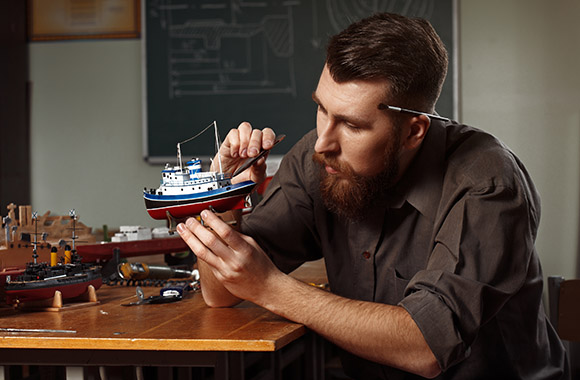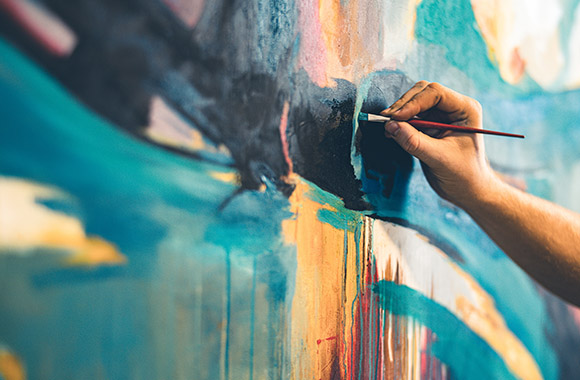Photography tips: Landscape photography & wildlife photography for beginners
When you take your camera out in the evening after work to capture the unique atmosphere before the sunset, the strains of everyday life are quickly forgotten. Photography allows you to live in the moment, to concentrate on your subject and to share with others how you see the world. Nature photography is great for this, as it always provides you with new inspiration. Whether you like to take pictures of landscapes, plants or animals, photography is a great way to express your love of nature and spend your free time outdoors. We will show you how to get started in nature photography and what equipment you’ll need.
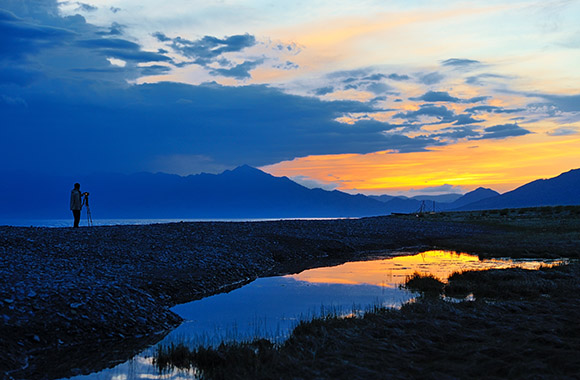
Table of contents
Landscape photography for beginners: How to take impressive photos of nature
Landscape photography is not only about capturing breath-taking views with your camera but also about documenting the surrounding nature. Landscape photography is the perfect hobby for you if you enjoy being out in nature (e.g. on bike tours or hikes) and want to discover the area in more detail. With the help of your camera, you can capture the world from your perspective and leave everyday life behind.
When photographing landscapes and animals, it is essential to be considerate towards nature to protect the environment and not upset animals.
When photographing landscapes and animals, it is essential to be considerate towards nature to protect the environment and not upset animals.
To make it easier for you to get started in this style of photography, we have put together a few photography tips for landscape photography:
- To expand your knowledge of photography and the correct camera settings, you can attend a photography course. Not only will you find like-minded people with whom you can exchange ideas, but you’ll also get tips from professionals on your pictures.
- The most beautiful pictures are usually taken at sunrise or sunset. Here, the sky not only turns spectacular colours, but the light is also softer, so there are fewer strong contrasts.
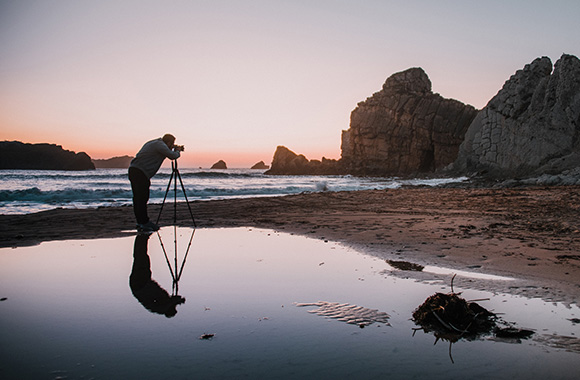
- It is best to use manual mode. This way you can adjust the focus, exposure time, etc. and take pictures that are exactly what you want.
-
You will always need to adjust the settings of your camera to the situation at hand, but you can use these values as a guide if you want to shoot wide landscapes:
- ISO: at around 100 to 200 in daylight and no higher than 1600 at night.
- Aperture: for a greater depth of field, a high f-stop of 9 to 16 (depending on the lens) is recommended.
- Focus: set manually
- Shutter speed/exposure time: adjust to the light situation and the desired image (e.g. smooth water) or use the auto function here.
- For unique pictures it is worth taking new perspectives or making the foreground more interesting. In addition, basic rules of composition (e.g. symmetry, leading lines, rule of thirds, golden ratio) can make your picture look more professional.
Of course, practice is the key to success. Try out different perspectives, exposure times, and camera settings to get the best results.
To make it easier for you to get started in this style of photography, we have put together a few photography tips for landscape photography:
- To expand your knowledge of photography and the correct camera settings, you can attend a photography course. Not only will you find like-minded people with whom you can exchange ideas, but you’ll also get tips from professionals on your pictures.
- The most beautiful pictures are usually taken at sunrise or sunset. Here, the sky not only turns spectacular colours, but the light is also softer, so there are fewer strong contrasts.
- It is best to use manual mode. This way you can adjust the focus, exposure time, etc. and take pictures that are exactly what you want.
-
You will always need to adjust the settings of your camera to the situation at hand, but you can use these values as a guide if you want to shoot wide landscapes:
- ISO: at around 100 to 200 in daylight and no higher than 1600 at night.
- Aperture: for a greater depth of field, a high f-stop of 9 to 16 (depending on the lens) is recommended.
- Focus: set manually
- Shutter speed/exposure time: adjust to the light situation and the desired image (e.g. smooth water) or use the auto function here.
- For unique pictures it is worth taking new perspectives or making the foreground more interesting. In addition, basic rules of composition (e.g. symmetry, leading lines, rule of thirds, golden ratio) can make your picture look more professional.
Of course, practice is the key to success. Try out different perspectives, exposure times, and camera settings to get the best results.

Camera, equipment & lenses for landscape photography at a glance
As a beginner, it is a good idea to buy the most needed equipment first and then steadily expand as you grow. You can get to know your equipment and later try out more specialist equipment. Below we give you some recommendations for good photography equipment for beginners:
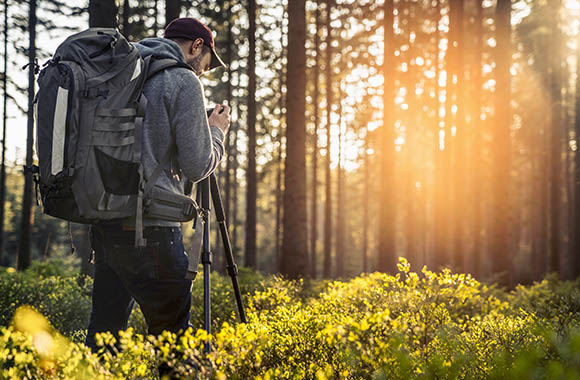
- Camera for landscape photography: to start out, try a cheaper single-lens reflex camera (DSLR) or mirrorless camera as they are good value for money. When looking for a suitable camera in a specialist shop, make sure that the camera has interchangeable lenses, a larger sensor (APS-C or full format), and a standard zoom between 16 and 70 mm.
- Lenses for landscape photography: Ultra-wide-angle lenses are recommended for capturing entire landscapes. Look for a focal length between 14 and 16 mm.
- Filters for landscape photography: Start by working with two different filters: Graduated filter (darkens the sky to improve exposure) and grey filter (allows long exposures).
- Stable tripod for off-road photography: Make sure your tripod has a stable stand so that you can set it up on uneven terrain or in water. Your tripod should also have a ball head that allows you to position the camera precisely.
With this basic equipment, you are sure to take great nature photos. If you are unsure about which camera or lenses are right for what you want to do, talk to an expert in a specialist shop.
Lenses and cameras for landscape photography can also be bought cheaply second-hand. However, when buying a camera, make sure you know its shutter count. Modern cameras are usually designed for about 150,000 shutter actuations, so a used camera with several 10,000 releases could be a good starter camera for you.
Lenses and cameras for landscape photography can also be bought cheaply second-hand. However, when buying a camera, make sure you know its shutter count. Modern cameras are usually designed for about 150,000 shutter actuations, so a used camera with several 10,000 releases could be a good starter camera for you.
Animal Photography: Tips & Tricks for Beginners
While landscape photography usually involves capturing still landscapes, wildlife photography is a bit more challenging as your subject moves or you sometimes have to wait until you get an animal in front of your lens. You have to be patient and react quickly at the right moment. For many, this is what makes wildlife photography so appealing and why it feels great when you get the perfect shot.
If you want to dive into the world of animal photography, take a look at these tips:
- For your first attempts, try visiting a zoo or wildlife park. You can also practice on your or your friend’s pets.
- In a photography course, you can learn useful photography tips from an expert and at the same time find out about good places for animal photography in your area. You can also network with other amateur animal photographers.
- Dawn and dusk are good times to encounter animals in the wild and to be able to photograph with soft light.
- Always photograph animals at eye level to get the best effect and an interesting perspective. For this, it may also be worth kneeling or lying on the ground.
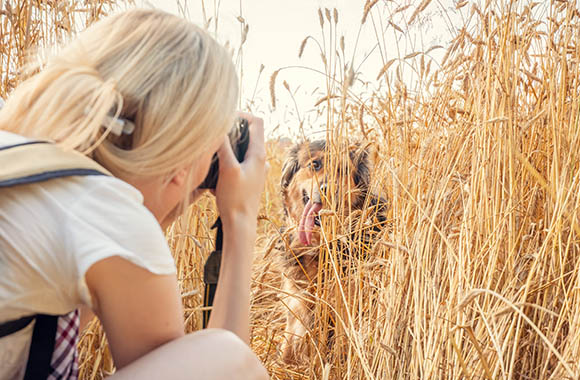
-
To capture fast movements of animals, adjust your camera beforehand so that you can take sharp pictures. You can use the following values as a guide:
- Aperture: To keep the focus on the animal, the aperture should be as small as possible.
- Shutter speed: The faster the animal moves, the faster the shutter speed should be. For slow movements, a time of 1/200 is advisable, for fast movements up to 1/2000.
- Focus: To keep the focus on the eyes of the animal, work with continuous autofocus (AF.C).
- ISO: about 100 to 200 in daylight or use the auto function here.
- Use the continuous shooting mode.
- Be careful not to disturb the animals and do not try to feed or attract wild animals. For wildlife photography, you need a lot of patience to capture the right moment. But you will be rewarded with fantastic images of the animals.
To make your photos look more professional and impressive, it is worthwhile to learn a few rules for picture composition. You can also give your photo a new shine with the right tricks in image editing.
To make your photos look more professional and impressive, it is worthwhile to learn a few rules for picture composition. You can also give your photo a new shine with the right tricks in image editing.
The right equipment & camera for wildlife photography
For your wildlife photos to be crisp and reflect all the details, your equipment needs to be able to capture fast movements as well as longer distances. As a beginner, you will need a suitable camera for wildlife photography as well as a few other pieces of equipment:
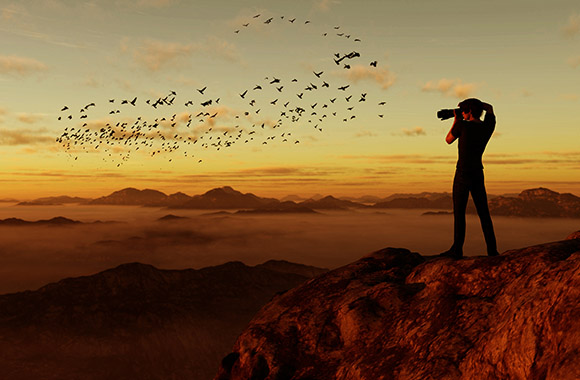
- Camera for wildlife photography: Cheaper SLR or mirrorless cameras are sufficient for beginners to gain experience. To ensure that your camera can capture fast movements well, you should look for the following features when buying: a large as possible zoom (approx. 200 mm), a larger sensor (APS-C or full-format), interchangeable lenses and the ability to take continuous shots at around 6 frames per second.
- Lenses for wildlife photography: To photograph animals from a safe distance, fast telephoto lenses (from 200 mm) that have an image stabiliser are recommended. You can tell how fast a lens is by its maximum aperture. Lenses with a value of f/3.5 and lower are usually considered fast.
- Tripods for photographing animals: A tripod gives you flexibility and stability when photographing in nature. Make sure you choose a small and handy model that is not too heavy.
Conclusion
If you are interested in landscape and/or wildlife photography, you will find exciting views everywhere in nature. If you want to get started in photography, start by using your camera’s automatic mode and photographing nature. This will give you an eye for the images and compositions, and you will gradually become more and more familiar with the settings and the technical side of photography. Photography is about constant learning and progressing at your own pace and eventually, you will be able to shoot the perfect landscape photo or animal portrait.
References:
https://www.americanforests.org/
(accessed on 16.12.2021)
https://www.exposureguide.com/
(accessed on 16.12.2021)
https://www.photoworkout.com/
(accessed on 16.12.2021)
Image Sources:
iStock.com/edb3_16
iStock.com/1970s
iStock.com/MarioGuti
iStock.com/audioundwerbung
iStock.com/Olga Ihnatsyeva
iStock.com/chainatp

